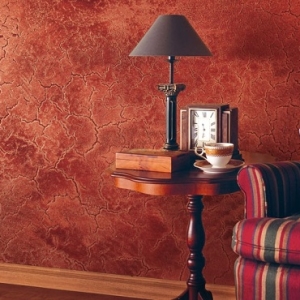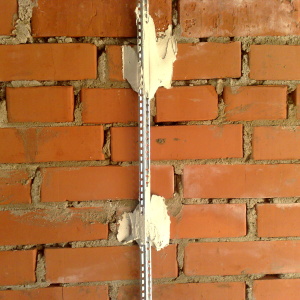The traditional material for finishing walls and ceilings is still plaster. A plaster solution prepared on the basis of lime is a universal substance that can be used in sufficient different conditions by virtue of its properties. Let's talk in more detail how to make a limestone for plaster.
Plastering lime solutions are characterized by a whole list of advantages:- The limestone is designed for plastering works inside the residential premises and for finishing the facades of houses.
- Based on the lime, you can prepare a solution that is suitable for applying to the subsequent painting or as a decorative surface finish, depending on which ingredients will be used additionally.
- The material is characterized by good thermal insulation properties.
- Separate attention deserves the ecological cleanliness of the finish and the ability to "breathe".
- During operation, the substance remains elastic, in contrast to quick-drying cement mortar and capricious gypsum.
- Since lime is inherent high alkalinity, you can not worry about the appearance of fungus and mold, as well as attacks of beetles and rodents.
- When driving nails in such a coating, there will be no plaster.
Some inconveniences are associated with the fact that lime is afraid of moisture, but when it is added to the cement solution, such a plaster mixture can be used even for bathrooms and basements.
Prepare a lime solution from such components:- Lime. The main ingredient. It can be different: harated, smaller, carbide, hammer, etc. The substance is harden slowly.
- Alabaster. It is capable of hardening in a few minutes, it is impossible to interfere with the cement. It is used as an additive to lime to achieve rapid grasp.
- Cement. It is distinguished by large strength characteristics compared to lime. Applied as a binder, with elevated loads. Common types of cement is slag and portland cement.
- Clay. It is capable of forming a viscous dough along with water, which can be given in the raw form any shape. Used when creating a plaster mix for furnaces of furnaces.
- Sand. Depending on the place of production, there is a river, marine, loaf, mountain. In terms of quality, the very best is the first, since, in contrast to other species there are no different impurities, solid inclusions and salts. In addition, it differs in size sizes, which are called the fraction.

According to the manual method of preparation, they act like this:
- The components of the mixture must be divided into pile of sand.
- The mixture must be mixed with robbles, leveling it in the box.
- At the same time, make sure that in the corners of the capacitance are not incredible components.
- Remember, if the mixture is not mixed, it has an inhomogeneous tone, and the stripes may be present.
It is possible to prepare a dry mixture for plaster and by means of a mechanized method, using a drill with a special nozzle. A bucket is taken as dishes. The components are mixed until the mass acquires a homogeneous look.
To obtain a plaster solution, the dry mixture is indulged by water, which should be added with parts, stirring the mass after each time. For mixing, the same mixer (drill with a nozzle) is useful. Try to correctly withstand the proportions of the solution so that its fatness is normal.In disruption of the proportions, the mixture of plaster loses its properties:
- If you have added a lot of binder, the solution will turn out to be fat, giving a greater shrinkage when drying and inclined to the occurrence of cracks.
- When using an excessive amount of aggregate, the solution will be skinny and lack of sufficient strength.
- Lime. Mass proportions are as follows: 1 part of the test prepared from lime, and 5 sand. Add to the sand test to the sand, make water, and after stirring, pumped the rest of the sand. Mass must work out like the dough. It is customary to prepare a lot of day when it will be used.
- Lime-gypsum. Prepared by small portions from limestone test and gypsum. First you need to prepare a gypsum dough: pour water into the container, gradually add plaster, stirring afterwards. Gypsum dough is then mixed with limescale. For all the work, it is customary to spend no more than 2 minutes, since the mixture is captured quickly, and after half an hour - harden. Tests will need 3 parts, gypsum - 1.
- Cement-lime. Prepare a dry mixture using sand and cement, and then it is necessary to pour a limestone dough diluted to the consistency of milk. Sand takes 3-5 parts, cement - 1, lime - 1 part.
- Cement. Prepared from cement (1 part) and sand (3 parts) Dry mixture is divorced by water, stirring afterwards. The mass is seized about 40 minutes, then its quality is reduced.
- Clay-lime. For the manufacture, clay is used, which is in advance soaked in water (1 part), and limestone dough (0.5). The mixture fastens the water so that it acquires the condition of sour cream, and after sand (3-6), stirring everything.

In the manufacture of lime solutions, remember that only specialists can make chemical additives in them, say, sodium nitrite or chlorinated water.


































